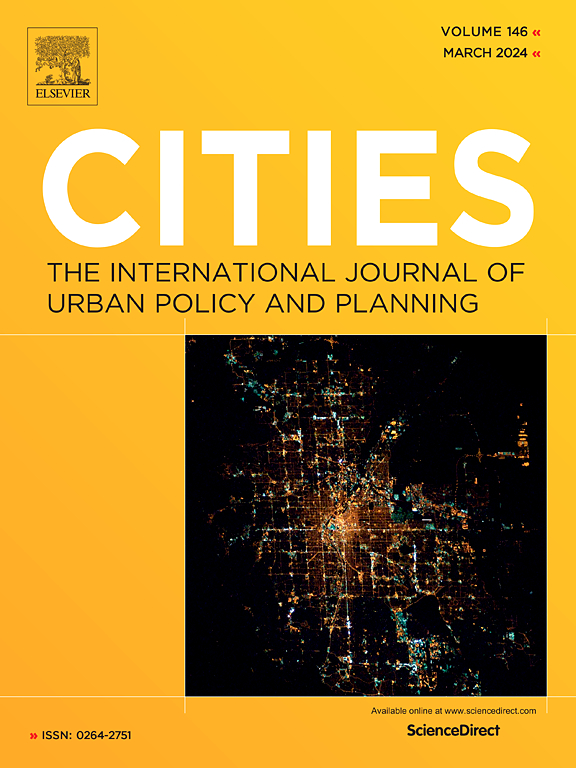Can the names of black cultural icons save the neighborhood: Relating street names to property values and neighborhood racial composition change in Harlem, New York City
IF 6.6
1区 经济学
Q1 URBAN STUDIES
引用次数: 0
Abstract
Gentrification-related concerns are prevalent across much of the US. In many metropolitan areas, housing unaffordability is high, and changes in neighborhood character associated with dispossession and cultural removal of communities of color are not uncommon. These conditions contribute to the need for expanded understanding of space-claiming and place-guarding strategies relevant to race and socioeconomic factors. Answering this call, this study uses street names to quantitatively describe the ways that racialized values and sentiments get absorbed into the housing market and shape neighborhood demographic composition. Using a hedonic pricing model – looking at the gentrifying neighborhood of Harlem in NYC between 2000 and 2020 – this work finds that properties situated on streets named after Black cultural icons experience 13.8 % lower sale prices than otherwise comparable properties on non-Black named streets. This suggests that naming streets after Black cultural icons may help dampen upward pressure on housing costs, contributing to affordability. Specific to demographic change, however, findings reveal that areas surrounding streets named after Black icons do not experience higher shares of Black population retention over time than do other parts of the neighborhood. This work is relevant to advocates and activities, planners and policymakers, interested in advancing housing justice.
黑人文化标志的名字能拯救社区吗:纽约市哈莱姆区将街道名称与房产价值和社区种族构成变化联系起来
在美国大部分地区,与 "郊区化 "相关的问题非常普遍。在许多大都市地区,住房负担不起的现象非常普遍,与有色人种社区被剥夺财产和文化迁移相关的社区特征变化也并不少见。这些情况促使人们需要进一步了解与种族和社会经济因素相关的空间主张和场所保护策略。为了响应这一号召,本研究利用街道名称来定量描述种族化的价值观和情感如何被住房市场所吸收并形成社区人口构成。本研究采用享乐主义定价模型,以 2000 年至 2020 年间纽约市哈莱姆区的绅士化社区为研究对象,发现位于以黑人文化偶像命名的街道上的房产,其售价比位于非黑人命名街道上的同类房产低 13.8%。这表明,以黑人文化偶像命名街道可能有助于抑制住房成本上升的压力,从而提高可负担性。然而,具体到人口变化,研究结果表明,以黑人偶像命名的街道周边地区的黑人人口保留比例并没有随着时间的推移而高于其他地区。这项工作对有志于促进住房公正的倡导者和活动、规划者和决策者都很有意义。
本文章由计算机程序翻译,如有差异,请以英文原文为准。
求助全文
约1分钟内获得全文
求助全文
来源期刊

Cities
URBAN STUDIES-
CiteScore
11.20
自引率
9.00%
发文量
517
期刊介绍:
Cities offers a comprehensive range of articles on all aspects of urban policy. It provides an international and interdisciplinary platform for the exchange of ideas and information between urban planners and policy makers from national and local government, non-government organizations, academia and consultancy. The primary aims of the journal are to analyse and assess past and present urban development and management as a reflection of effective, ineffective and non-existent planning policies; and the promotion of the implementation of appropriate urban policies in both the developed and the developing world.
 求助内容:
求助内容: 应助结果提醒方式:
应助结果提醒方式:


